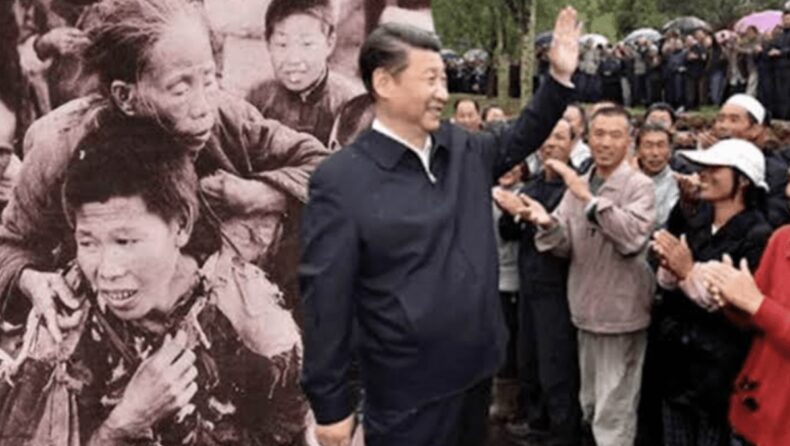China had deprived its economic comfort in the past to dominate the global economy at present. Till today, the dragon nation managed to rank in the top two positions in terms of GDP.
History of poverty in China
China was one of the well-sustained economies with a socialist model of governance at the dawn of the twentieth century. Historically pastoral society was prevalent in ancient times with bleak industrialization.
The anti-western culture of the nation resisted any technological inflow apart from the domestic establishments, during the 1950s around 83% of the population was dependent on agriculture.
China’s humiliations: the primary instigator
China faced severe humiliation historically mainly from the western nations and Japan in several instances. This made it realize the need to be self-reliant.
The opium wars
The first Opium War (1839–42) was fought between China and Britain, and the second Opium War (1856–60), was fought by Britain and France against China.
Reason:- Opium was illegally exported to China by the British from India and Myanmar (which were under British rule since the 18th century). This deteriorated the social and economic health of China resulting in frequent clashes and wars.
Outcome:-
The first Opium War ended with the Treaty of Nanjing (August 29, 1842). China paid war indemnity and ceded Hong Kong to the British. British merchants gained access to trade at five “treaty ports”. British also gained legal privileges to trial British accused only in British courts.
The second Opium war ended with Beijing Convention (Oct 1860). China granted the rights (given to the British) to other countries (Russia and France) and ceded the southern part of the Kowloon Peninsula (adjacent to Hong Kong) to the British.
World War I
Although China never directly participated in the First World War (1914 – 1918), the British and the French leveraged the economically derelict Chinese peasants for logistic wings in the war.
But the wages were frequently cut and the workers were ill-treated and often unpaid and dismissed.

These experiences agitated the Chinese peasants to topple the Qing Dynasty and establish the Chinese Communist Party on 1 Jul 1921.
The hasty leap forward policy: the secondary revolution instigator
During the initial phase, the great communist leader Mao Zedong sought cordial assistance from the Soviet Union during the 1950s to expand the steel and mining industries.
As a result of support from the Red allay, agricultural and industrial output value grew from 30% in 1949 to 56.5% in 1957, and heavy industry saw similar growth from 26.4% to 48.4%
Things went derogatory to the Chinese economy when Mao Zedong turned over ambitious to bring abrupt growth to the Chinese economy and transform the agricultural nation into an industrialized one.
He saddled up the farmers to increase raw material feed to the manufacturing sector to get better output.

Outcome:-
The Great Leap Forward caused an economic setback, industries failed to meet desired outputs which caused a shortage of agricultural tools and farming equipment. Further, a widespread famine due to a drop in agriculture sabotaged the nation.
Gradual growth post-1978:-
The economy managed to have an optimal GDP growth of 3.6% from 1952 to 1978 overarching the inflation.
The economy transformed from an agricultural to an industrial sector due to increased jobs in the industrial sector. And annual steel production grew from 1.3 million tons to 23 million tons, coal grew from 66 million tons to 448 million tons, electric power generation increased from 7 million to 133 billion kilowatt-hours, and cement production rose from 3 million to 49 million tons per year.
Economic reformation during the 1980s

China under Deng Xiaoping started to liberalize from a socialist economy to a customized capitalist system foreign investments grew, and universities flourished increasing the educated and skilled labor force to feed the industries and thus embarked on progress.
Eradicating poverty

As per the reports of the World Bank since 1978 China focused on rapid economic growth paired with economic transformation.
The market incentive reforms in the agriculture sector, the development of low-skilled labor provided huge employment opportunities.
Further, urbanization helped in the migration of the labor force and flourishing industries.
Thereby, from 1978 China’s poverty headcount dropped from 770 million to 5.5 million as of now. Globally this contributed to a 75% decline in poverty.
This helped in increasing the human development index of China from 106 (of 144 countries) in 1990 to 79 (of 191 countries) in 2021. While India ranks 132.
Major accomplishments
Healthcare
China made substantial investments in health care since the 1950s thus by 1978 the infant mortality rate was 52 per 1000 live births and life expectancy rose to 66 years.
Education
At present, the primary school enrollment rate is 96% and the secondary school enrollment rate is 49.9%, further China is the largest source of students in foreign universities.

Present progress of China
Presently China leads the world economy and is one of the few nations to have recovered quickly from COVID-19.

China has even managed to top the annual GDP growth compared to other developed nations and it is one of the nations to have trade deficit with the U.S despite several sanctions.


Read More –
https://tdznkwjt9mxt6p1p8657.cleaver.live/india-gradually-stepping-into-5g-race-won-by-china/













